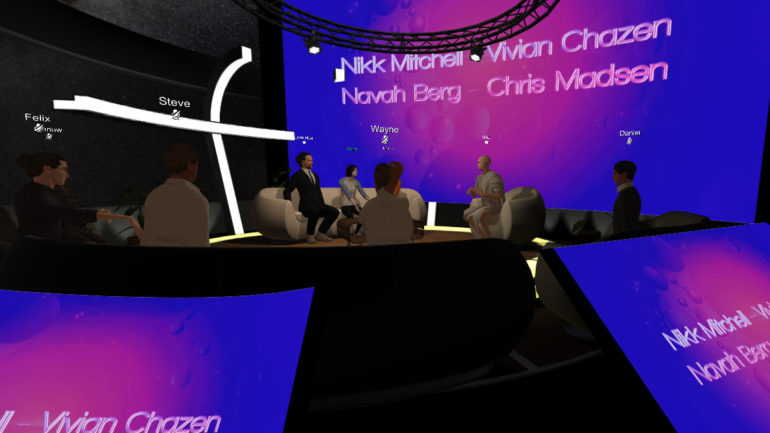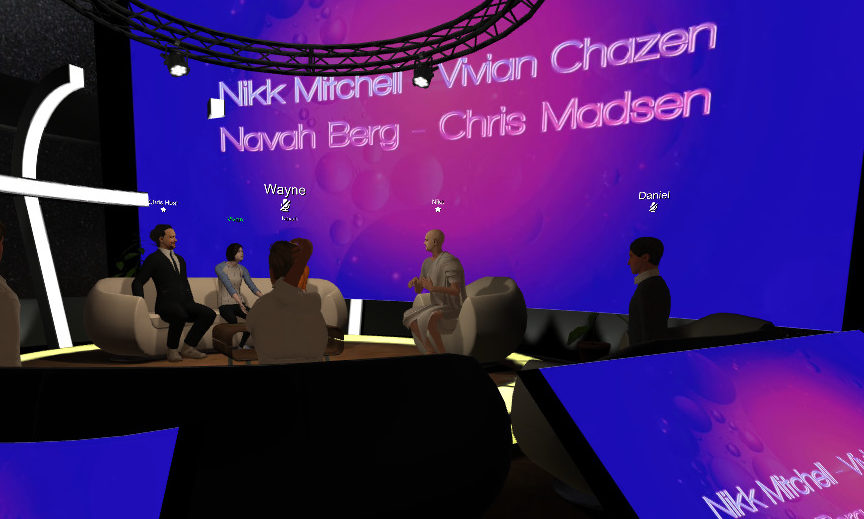
Alina Zorina
Making friends without seeing them in real life, attending events under the water or on the surface of Mars, watching tyrannosauruses during conferences are now possible in virtual reality (VR).
The COVID-19 pandemic sped up this technology for adaptation by at least two years, said Chris Madsen, a business developer for Engage, a VR platform.
“Now all of a sudden we have the entire world looking for ways in which we can connect human to human, using lots of digital solutions,” he said.
“People started to realize that they can even go beyond the zoom call where you’re looking at somebody on the screen when you can actually be present with someone else,” Madsen said.
The idea of VR is that the human brain actually feels present during virtual training and lessons, he said.
Body movements are coordinated with an avatar which involves muscle memory. People’s brains are remembering muscle memory in those actions from VR which can’t be performed on a standard screen.
“It’s also experiential because you’re no longer an observer, you’re a participant, our brains were designed to learn through experience,” Madsen said.
“So the retention level of information because our brains are treating it as an experience is much greater when you do it virtually like that.”
VR is no longer a sphere only for games it provides a wide range of opportunities for education, business development, networking, travel and social interaction.
Many colleges, including Humber, and universities are taking advantage of VR technology. Stanford University is using Engage to bring its cadaver lab into virtual reality and to hold virtual classes as though they’re in an actual lab, Madsen said.

VR events became a solution for those who were isolated and unable to socialize with other people because of the quarantine.
Farina Hamann, a part-time worker at NextReality Hamburg, co-hosted weekly events on AltspaceVR, another VR platform, and said people were simply happy to communicate virtually during the isolation.
Hamann said she had many wonderful conversations with strangers without ever meeting them in person.
“I went to one woman meet-up and the organizer didn’t appear so I talked to another attendee and we had a really nice chat so we went to the other space and talked near (a) lake,” she said.
VR has unlimited potential in creating various spaces which makes it efficient for dangerous job training, Madsen said.
This technology allows people to experience adrenaline and fear as in the real world. Learning to deal with those emotions during training will help workers remain calm if a hazardous situation happens in reality, Madsen said.
He said the quarantine dramatically increased the number of VR users and demand now is greater than the supply.
“Our incoming calls have increased by 1,000 per cent since the COVID-19 pandemic with the people looking for solutions,” Madsen said.
However, he said there’s no need to fully transition to VR but it can be used under certain circumstances, such as travel restrictions or overcoming inconveniences of meeting in person.
“For me personally, it has made my stay at home much easier and more bearable by being able to have these shared experiences with others in virtual reality,” he said.
This infographic shows the potential usage of VR in many spheres of people’s lives.


